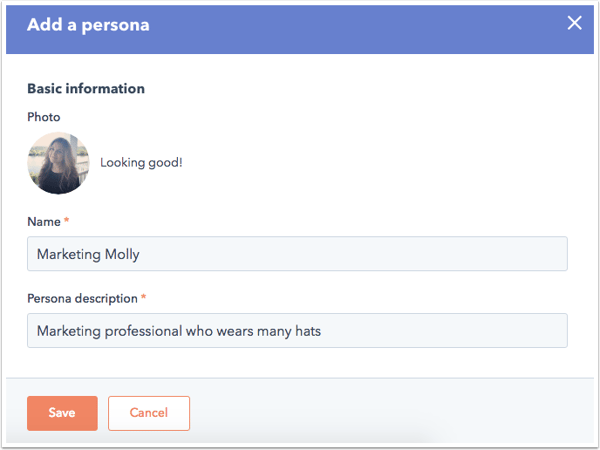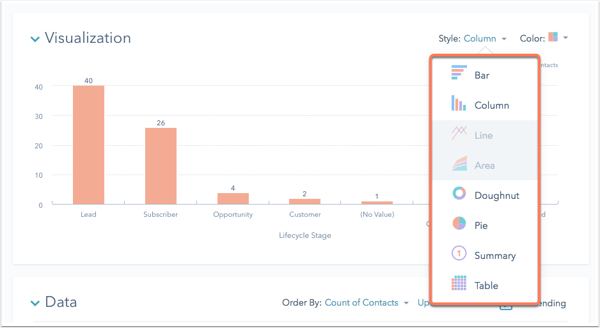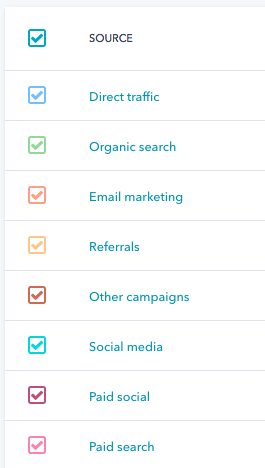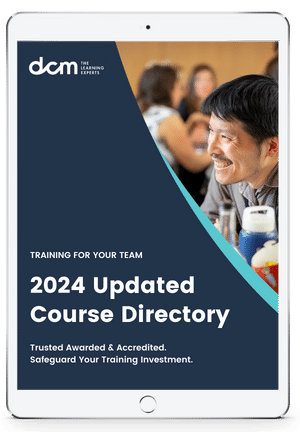What is digital marketing strategy?
Your digital marketing strategy is the series of actions that help you achieve your company goals through carefully selected online marketing channels. These channels include paid, earned, and owned media, and can all support a common campaign around a particular line of business.
The term "strategy" might seem intimidating, but building an effective digital strategy doesn't need to be difficult.
In simple terms, a strategy is just a plan of action to achieve the desired goal or multiple goals. For example, your overarching goal might be to generate 25% more leads via your website this year than you drove last year.
Despite our simplification of the term "strategy," there's no doubt it can be difficult to get started actually building one. Let's see what a digital marketing campaign looks like, and then, we'll jump into those seven building blocks to help you create an effective digital marketing strategy to set up your business for online success.
What Is a Digital Marketing Campaign?
It's easy to confuse your digital strategy with your digital marketing campaigns, but here's how to distinguish the two.
For example, you might decide to run a campaign sharing some of your best-performing gated content on Twitter, to generate more leads through that channel. That campaign is part of your strategy to generate more leads.
Here a few other well-known examples of digital marketing campaigns and the strategies they employ.
How to Create a Digital Marketing Strategy
1. Build your buyer personas.
For any marketing strategy - offline or online - you need to know who you're marketing to. The best digital marketing strategies are built upon detailed buyer personas, and your first step is to create them.
Buyer personas represent your ideal customer(s) and can be created by researching, surveying, and interviewing your business's target audience. It's important to note that this information should be based upon real data wherever possible, as making assumptions about your audience can cause your marketing strategy to take the wrong direction.
To get a rounded picture of your persona, your research pool should include a mixture of customers, prospects, and people outside your contacts database who align with your target audience.
But what kind of information should you gather for your own buyer persona(s) to inform your digital marketing strategy? That depends on your businesses and is likely to vary depending on whether you're B2B or B2C, or whether your product is high cost or low cost. Here are some starting points, but you'll want to fine-tune them, depending on your particular business.
Quantitative (or Demographic) Information
- Location. You can use web analytics tools like Google Analytics to easily identify what location your website traffic is coming from.
- Age. Depending on your business, this may or may not be relevant. It's best to gather this data by identifying trends in your existing prospect and customer database.
- Income. It's best to gather sensitive information like personal income in persona research interviews, as people might be unwilling to share it via online forms.
- Job Title. This is something you can get a rough idea of from your existing customer base and is most relevant for B2B companies.
Qualitative (or Psychographic) Information
- Goals. Depending on the need your product or service was created to serve, you might already have a good idea of what goals your persona is looking to achieve. However, it's best to cement your assumptions by speaking to customers, as well as internal sales and customer service representatives.
- Challenges. Again, speak to customers, sales and customer service representatives to get an idea of the common problems your audience faces.
- Hobbies and interests. Speak to customers and people who align with your target audience. If you're a fashion brand, for example, it's helpful to know if large segments of your audience are also interested in fitness and well-being, as that can help inform your future content creation and partnerships.
- Priorities. Speak to customers and people who align with your target audience to find out what's most important to them in relation to your business. For example, if you're a B2B software company, knowing that your audience values customer support over a competitive price point is very valuable information.
Take this information and create one or more rounded personas, like Marketing Molly below, and ensure they're at the core of your digital marketing strategy.

2. Identify your goals and the digital marketing tools you'll need.
Your marketing goals should always be tied back to the fundamental goals of the business. For example, if your business's goal is to increase online revenue by 20%, your goal as a marketer might be to generate 50% more leads via the website than you did last year to contribute towards that success.
Whatever your overarching goal is, you need to know how to measure it, and more important, actually be able to measure it (e.g., have the right digital marketing tools in place to do so). How you measure the effectiveness of your digital strategy will be different for each business and dependent on your goal(s), but it's vital to ensure you're able to do so, as it's these metrics which will help you adjust your strategy in the future.
If you're a HubSpot customer, the Reporting add-on in your HubSpot software brings all of your marketing and sales data into one place, so you can quickly determine what works and what doesn't.

3. Evaluate your existing digital channels and assets.
When considering your available digital marketing channels or assets to incorporate into your strategy, it's helpful to first consider the bigger picture to avoid getting overwhelmed. The owned, earned, and paid media framework helps to categorize the digital 'vehicles', assets, or channels that you're already using.
Owned Media
This refers to the digital assets that your brand or company owns -- whether that's your website, social media profiles, blog content, or imagery, owned channels are the things your business has complete control over. This can include some off-site content that you own, but isn't hosted on your website, like a blog that you publish on Medium, for example.
Earned Media
Quite simply, earned media refers to the exposure you've earned through word-of-mouth. Whether that's content you've distributed on other websites (e.g., guest posts), PR work you've been doing, or the customer experience you've delivered, earned media is the recognition you receive as a result. You can earn media by getting press mentions, positive reviews, and by other people sharing your content on social media, for instance.
Paid Media
Paid media is a bit self-explanatory in what its name suggests -- and refers to any vehicle or channel that you spend money on to catch the attention of your buyer personas. This includes things like Google AdWords, paid social media posts, native advertising (like sponsored posts on other websites), and any other medium for which you directly pay in exchange for visibility.
Gather what you have, and categorize each vehicle or asset in a spreadsheet, so you have a clear picture of your existing owned, earned, and paid media.
Your digital marketing strategy might incorporate elements of all three channels, all working together to help you reach your goal. For example, you might have an owned piece of content on a landing page on your website that's been created to help you generate leads. To amplify the number of leads that content generates, you might have made a real effort to make it shareable, meaning others are distributing it via their personal social media profiles, increasing traffic to the landing page. That's the earned media component. To support the content's success, you might have posted about the content to your Facebook page and have paid to have it seen by more people in your target audience.
That's exactly how the three can work together to help you meet your goal. Of course, it's not compulsory to use all three. If your owned and earned media are both successful, you might not need to invest in paid. It's all about evaluating the best solution to meet your goal, and then incorporating the channels that work best for your business into your digital marketing strategy.
Now you know what's already being used, you can start to think about what to keep and what to cut.
4. Audit and plan your owned media campaigns.
At the heart of digital marketing is your owned media, which pretty much always takes the form of content. Every message your brand broadcasts can generally be classified as content, whether it's your 'About Us' page, your product descriptions, blog posts, ebooks, infographics, or social media posts.
Content helps convert your website visitors into leads and customers, and helps to raise your brand's profile online -- and when it's optimized, it can also boost any efforts you have around search/organic traffic. Whatever your goal, you're going to need to use owned content to form your digital marketing strategy.
To build your digital marketing strategy, you need to decide what content is going to help you reach your goals. If your goal is to generate 50% more leads via the website than you did last year, it's unlikely that your 'About Us' page is going to be included in your strategy -- unless that page has somehow been a lead generation machine in the past.
It might more likely that an ebook gated by a form on your website drives far more leads, and as a result, that might be something you want to do more of. Here's a brief process to follow to work out what owned content you need to meet your digital marketing goals:
Audit your existing content.
Make a list of your existing owned content, and rank each item according to what has previously performed best in relation to your current goals. If your goal is lead generation, for example, rank them according to which generated the most leads in the last year. That might be a particular blog post, an ebook, or even a specific page on your website that's converting well.
The idea here is to figure out what's currently working, and what's not so that you can set yourself up for success when planning future content.
Identify gaps in your existing content.
Based on your buyer personas, identify any gaps in the content you have. If you're a math tutoring company and have discovered in your audience research that one of your persona's biggest challenges is finding interesting ways to study, but you don't have any content that speaks to that concern, then you might look to create some.
By looking at your content audit, you might discover that ebooks hosted on a certain type of landing page convert really well for you (much better than webinars, for example). In the case of this math tutoring company, you might make the decision to add an ebook about 'how to make studying more interesting' to your content creation plans.
Create a content creation plan.
Based on your findings and the gaps you've identified, make a content creation plan outlining the content that's necessary to help you hit your goals. This should include:
- Title
- Format
- Goal
- Promotional channels
- Why you're creating it (e.g., "Marketing Molly struggles to find time to plan her blog content, so we're creating a template editorial calendar")
- Priority level (to help you decide what's going to give you the most "bang for your buck")
This can be a simple spreadsheet, and should also include budget information if you're planning to outsource the content creation, or a time estimate if you're producing it yourself.
5. Audit and plan your earned media campaigns.
Evaluating your previous earned media against your current goals can help you get an idea of where to focus your time. Look at where your traffic and leads are coming from (if that's your goal) and rank each earned media source from most effective to least effective.

You might find that a particular article you contributed to the industry press drove a lot of qualified traffic to your website, which in turn converted really well. Or, you might discover that LinkedIn is where you see most people sharing your content, which in turn drives a lot of traffic.
The idea here is to build up a picture of what earned media will help you reach your goals, and what won't, based on historical data. However, if there's something new you want to try, don't rule that out just because it's not yet tried and tested.
6. Audit and plan your paid media campaigns.
This process involves much of the same process: You need to evaluate your existing paid media across each platform (e.g., Google AdWords, Facebook, Twitter, etc.) to figure out what's likely to help you meet your current goals.
If you've been spending a lot of money on AdWords and haven't seen the results you'd hoped for, maybe it's time to refine your approach, or scrap it altogether and focus on another platform that seems to be yielding better results.
By the end of the process, you should have a clear idea of which paid media platforms you want to continue using, and which (if any) you'd like to remove from your strategy.
7. Bring it all together.
You've done the planning and the research, and you now have a solid vision of the elements that are going to make up your digital marketing strategy. Here's what you should have so far:
1. Clear profile(s) of your buyer persona(s)
2. One or more marketing-specific goals
3. An inventory of your existing owned, earned and paid media
4. An audit of your existing owned, earned, and paid media
5. An owned content creation plan or wish list
Now, it's time to bring all of it together to form a cohesive strategy document. Let's revisit what digital strategy means: the series of actions that are going to help you achieve your goal(s) using online marketing.
By that definition, your strategy document should map out the series of actions you're going to take to achieve your goals, based on your research to this point. A spreadsheet is an efficient format -- and for the sake of consistency, you might find it easiest to map out according to the owned, earned, and paid media framework we've used so far.
You'll also need to plan your strategy for a longer-term period - typically, something like 12 months is a good starting point, depending on how your business is set up. That way, you can overlay when you'll be executing each action. For example:
- In January, you might start a blog which will be continually updated once a week, for the entire year.
- In March, you might launch a new ebook, accompanied by paid promotion.
- In July, you might be preparing for your biggest business month - what do you hope to have observed at this point that will influence the content you produce to support it?
- In September, you might plan to focus on earned media in the form of PR to drive additional traffic during the run-up.
By taking this approach, you're also creating a structured timeline for your activity, which will help communicate your plans to your colleagues - not to mention, maybe even help keep you sane.
Your Path to Digital Marketing Strategy Success
Your strategy document will be very individual to your business, which is why it's almost impossible for us to create a one-size-fits-all digital marketing strategy template. Remember, the purpose of your strategy document is to map out the actions you're going to take to achieve your goal over a period of time - as long as it communicates that, then you've nailed the basics of creating a digital strategy.
Source: Hubspot





